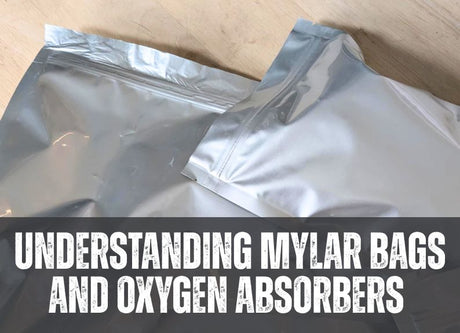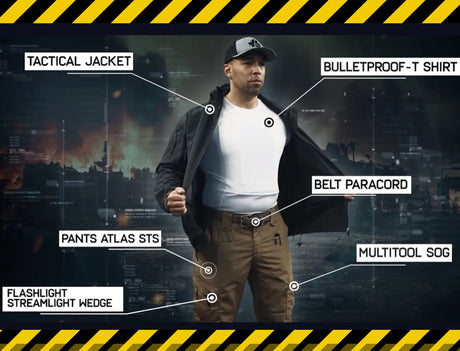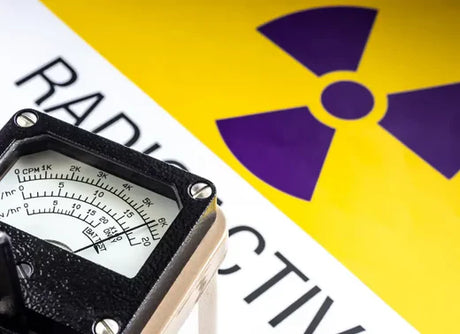Surviving in a post-apocalyptic scenario is about more than being prepared; you may want to keep your location discreet to keep yourself safe. If you are hiding from potential threats, keeping your site minimal and your footprint small can help you avoid detection. This blog will look at how you can be discreet and what skills you can develop to keep yourself out of sight.
Learning to build a discreet fire is an essential bushcraft skill.
A fire is a dead giveaway of your location, but it’s also a necessity for survival. Making a covert fire is a survival skill that will be a necessity when being hidden is critical. A Dakota fire hole is the best method for keeping your site hidden.
To build a Dakota fire:

-
Dig a hole about one foot deep (having a trowel in your bug-out bag is a must). Make the hole slighter wider at the bottom than at the top, depending on the cooking method you’ll use.
-
Dig another smaller hole about 10” from the main hole at an angle to intercept the first hole you dug. This hole is necessary to give your fire oxygen––which is an essential component. The whole should be open to the direction of the wind so that air can travel easily into the opening.
-
Once the holes are connected, you can use dry tinder and kindling and wood to build a fire at the base of your first hole. The dryer the material, the less smoke will be produced.
- If you are cooking with a pan, build a slightly raised surface of rocks to allow for adequate airflow.

In addition to building a fire, you can follow these tips to increase how discreet you are both day and night:
-
Build your fire closer to a leafy tree to help dissipate smoke further.
-
Ensure your site is far from any trail or road so that any light cast from your fire is less likely to be detected.
-
You can also use a wood stove and camouflage tent to discreetly camp; however, this is less nomadic, so it might not be the best option if you need to flee quickly. Use your discretion.
-
Using wet or rotting logs will produce dark smoke in addition to being more difficult to light.
-
Use the dirt from creating your Dakota fire hole to cover the fire quickly and easily.
-
Use any cleared leaves and debris to cover the spot where your fire and camp were located if you move on from your current location. Ensure your fire is fully extinguished, as a forest fire is both hazardous and a good way to signal your location.
- Avoid cutting fresh wood if possible, it will be more difficult to burn and the fresh cuts can alert someone to your location. Try to utilize dried, fallen wood and tinder as much as possible.
Choose a campsite that is hard to access. 
When choosing a location to lay your head, it would be a waste of time to choose a location that is right off the road or trail that is easily accessible and easily found. Keeping away from easy-to-access locations is a great way to stave off any unwanted company. In addition, you can utilize these methods to further hide your camp:
-
Camouflage is a necessity, so whether you sleep under a tarp or a tent, ensure you’re hidden with a camouflage pattern that reflects your environment. Choose colours and elements that reflect your environment, this will help you stay as undetected as possible while remaining protected from the elements.
-
Sleep away from your fire; if anyone notices your cooking site, they are more likely to think you’ve already moved on if they can’t see your shelter.
-
Choose a flat surface to build your site while also ensuring it is in an area where the flora is dense and tall to shield you from prying eyes. Avoid obvious clearings or other exposed areas.
-
Utilize a trip-wire system around the perimeter of your sleeping area to alert you to any potential intruders and give yourself time to react appropriately.

-
Scope your area before establishing your site for signs that others have passed through the area. If they have, it might be best to move on.
- While you may be desperate for shelter, an abandoned hunting shack or other permanent structure is an obvious place to look for someone. Do your best to avoid these areas if possible.
Always be strategic when preparing and storing food.
Any trash or food prep items left behind can give away your position, especially if someone is looking to find you. A clean site is critical both as a matter of respect to the environment and your safety. For low detection nourishment, you can utilize these tips:
- When hunting, ensure you are well away from your campsite as the sound of your weapon can reveal your location. Learning more traditional methods such as bow-hunting or fishing is a skill set that will help you when silence is critical to your survival.

- Freeze-dried food requires little preparation and can be made directly in the mylar pouch. Simply boil water and mix for a delicious meal packed with the nutrients you require to survive.
-
If you are eating on the run, having an MRE or other nutritional supplement bar will help you receive nutrients without having to stop. We recommend carrying them on the outside of your pack for quick access.
XMREs
-
Learning to forage can help you find food that is nutritious without alerting anyone to your position through cooking. This is especially helpful if you’re on the move. If you are looking for a good area to settle in, knowing that you are near a berry patch, an area with lots of mushrooms, or other edible flora and natural medicines can be a fantastic asset.
In addition to maintaining a low profile, protect yourself and your food from wildlife by suspending it from a tree or rockface (having a paracord in your bug-out bag is incredibly important for this). Ensure your food is also stored away from your sleeping area to prevent unwanted attention from bears and other predators.
Manual navigation skills can prevent you from leaving a digital footprint.

Learning how to navigate without the assistance of GPS devices is a critical skill after grid-down, but it can also help you avoid detection if there hasn’t been a grid failure. Signals from your GPS device can allow you to be located and can additionally provide a trajectory and search area for anyone trying to find you. You can read our blog on manual navigation to build your skills and learn how to orient in the wild. In addition, always remember:
-
Know the declination information for your area
-
Keep your maps up-to-date for the most accurate navigation
-
Ensure you choose a good compass and that you know how to use it comfortably BEFORE it is necessary for your survival
-
Bring pencils or whiteboard markers to help you with navigation
- Familiarize yourself with your region and potential bug-out area prior to survival being necessary
Being cautious, attentive, and strategic will help you survive anything.
Learning how to move in the wild to avoid detection requires strategic and methodical thinking. Developing these skills ahead of necessity is the best way to ensure you are prepared for anything. If you want to learn more about how to prepare to bug out and what to pack, we have checklists that can help you choose the right items for your needs.










